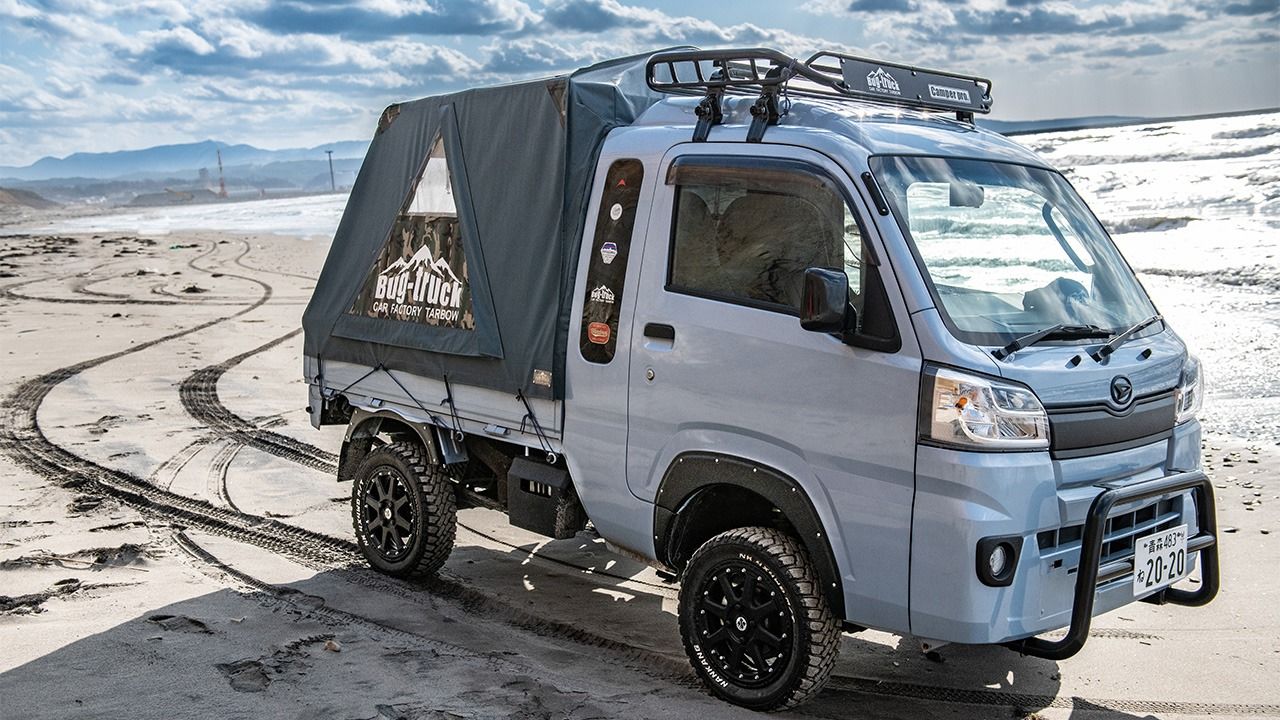
Big Things in Small Packages: The Charm of Japan’s Kei Truck
Lifestyle Technology Travel- English
- 日本語
- 简体字
- 繁體字
- Français
- Español
- العربية
- Русский
“Kei Trucks” Rooted in Japanese Life
Kei trucks (light trucks) equipped with a two-person seating area and a large cargo bed in the rear are used as business vehicles for a variety of industries, including agriculture, fishing, landscaping, construction, liquor stores, and motorcycle shops. While the trucks have a minimum size that allow them to maneuver easily on smaller roads, the rear cargo beds are surprisingly spacious, making these perfectly serviceable working vehicles.
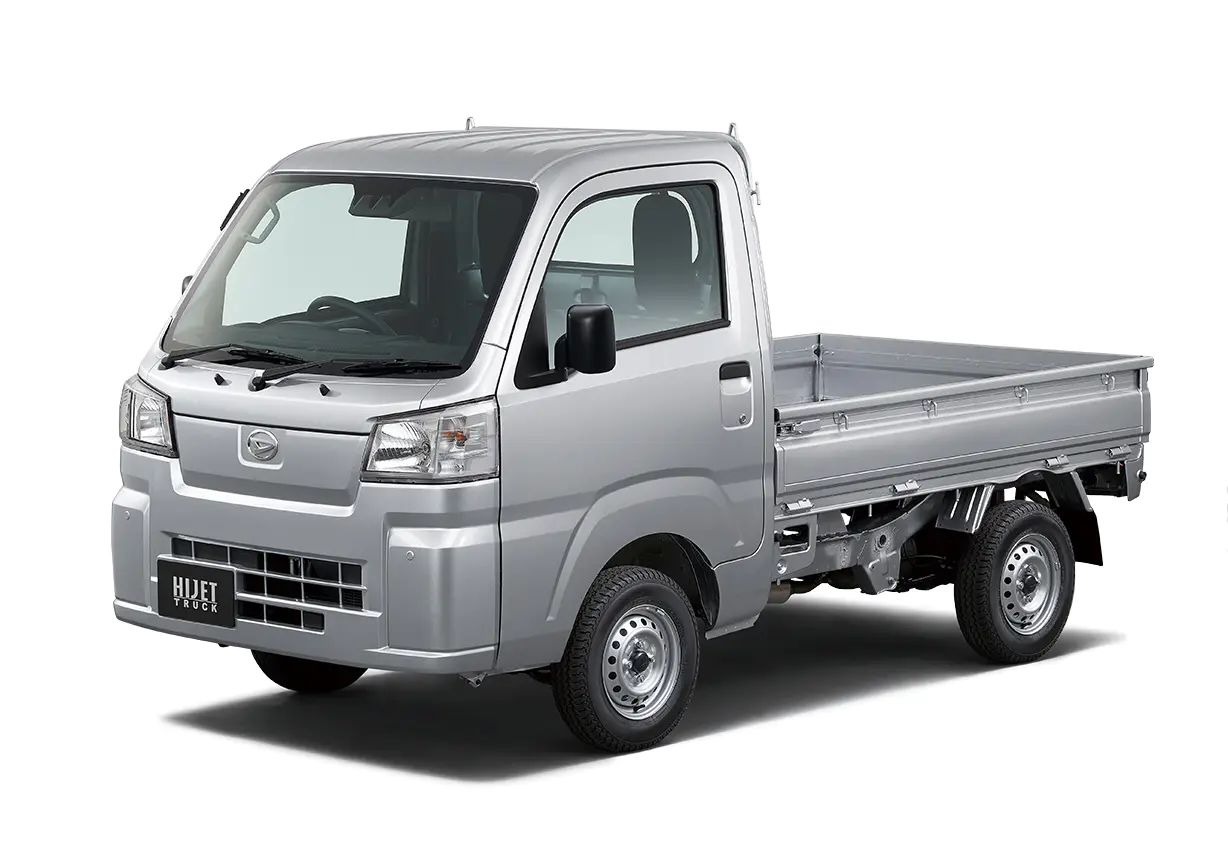
The Daihatsu Hijet Truck is a representative kei truck model, boasting a maximum load capacity of 350 kg. (© Daihatsu)
The kei vehicle category is defined as having engine displacement of 660 cc or less. Despite this pint-sized power profile, though, kei trucks, affectionately called keitora in Japanese, are ready to carry boxed items, such as agricultural containers and beer cases, as well as longer items like timber and boards, and even bulky cargo like motorcycles. Since kei trucks are a light vehicle standard, running costs for taxes, insurance, expressway tolls, and so forth are lower than for standard vehicles, and they have great economic benefits as well as practicality.
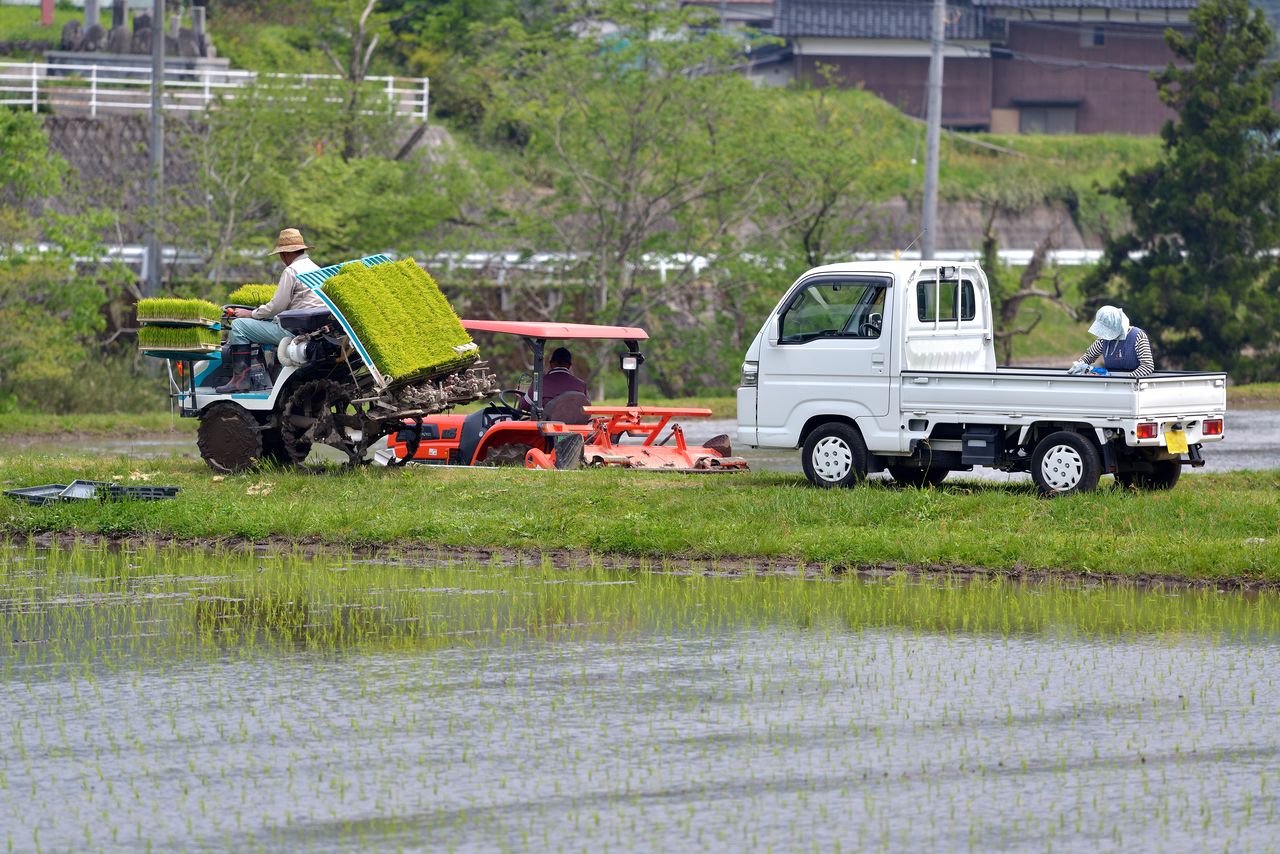
Keitora are practical vehicles that are essential for various jobs such as agriculture and fishing. (© Pixta)
Let’s give an example that shows the high practicality level of kei these little trucks. The Toyota Hilux is currently a representative pickup truck sold domestically in Japan, but kei trucks actually have a wider cargo bed than the Hilux, despite its much larger body.
The Hilux has a total length of 5,340 mm and a total width of 1,855 mm. Kei trucks have a total length of less than 3,400 mm and a total width less than 1,480 mm, making the Hilux about 1.6 times as long as its kei cousin. However, the Hilux cargo bed floor length is just 1,565 mm, while the kei truck boasts a bed 2,030 mm long. The cargo bed width is also 1,410 mm, compared to the Hilux’s 1,380 mm at its rear opening. It’s clear that these tiny workhorses are space-efficient and practical.
In the past few years, Japanese light trucks, nicknamed “kei trucks” and “mini trucks,” are increasingly seen in action in overseas markets like the United States and Australia. They are popular for their mobility and economy, due to their minimal package that cannot be found in other countries, as well as their quality that is emblematic of Japanese cars. They are used as economical and practical vehicles with quick turning capabilities, often in large facilities like ranches and farms.
There is data showing the high level of attention the trucks have received in recent years. The number of kei trucks stolen significantly increased compared to the previous year according to theft statistics released by the National Police Agency on March 1, 2024. Among the top 10 stolen vehicles, which included the Toyota Alphard and Land Cruiser, the Suzuki Carry ranked sixth and the Daihatsu Hijet seventh. Although these rankings are nothing to boast about, one reason kei trucks rank so highly is said to be rooted in their growing popularity overseas.
Furthermore, they are gaining popularity among enthusiasts who love customizing them as part of a “cool Japan” car culture.
Useful for Leisure as Well
Changes are occurring now in the way light vehicles are used in Japan. They have supported Japanese people’s lives with their overwhelming practicality, but in recent years, they have been increasingly used by younger drivers for fishing, camping, and other outdoor leisure activities. In addition to the lineup of specially designed cars from automobile manufacturers, there is a wide range of variations, including models with on-demand four-wheel drive and an “agricultural grade” that improves drivability on rough roads with a differential lock function to adjust the rotation difference between the left and right wheels.
Although kei trucks are a utility vehicle in the smallest category, they offer access to many aftermarket parts like tires and wheels, mufflers, suspensions, and aero parts, so people can enjoy customizing them as they like.
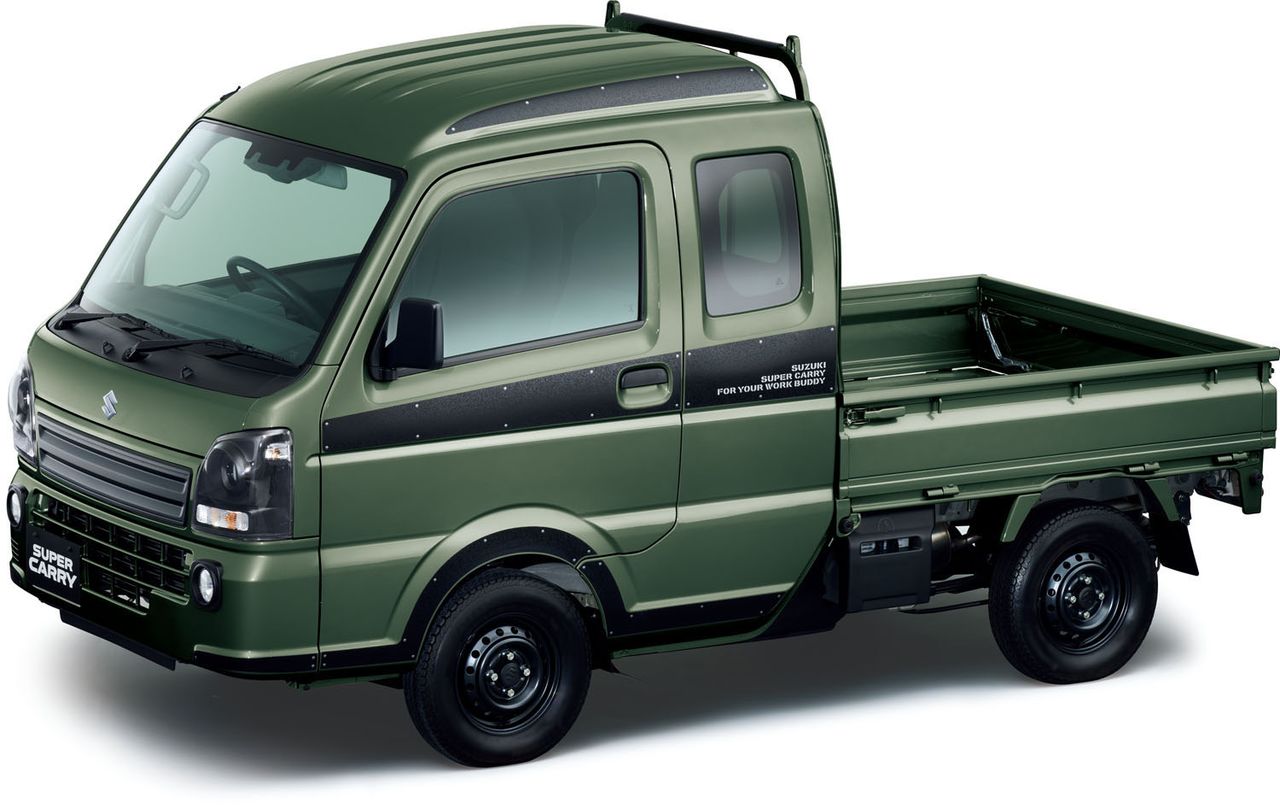
The Suzuki Super Carry special edition X Limited model made a fearless impression with special decals for decoration and blackout painting on various parts. This manufacturer-customized vehicle was released in response to the popularity of light trucks. (© Suzuki)
Kei trucks are extremely popular around the world as hobby tools. But when it comes to using them, getting playful with them, and customizing them, it’s their birthplace of Japan that leads the world. Read on for some uniquely Japanese custom stylistic takes on the keitora.
A Mini Monster Truck?
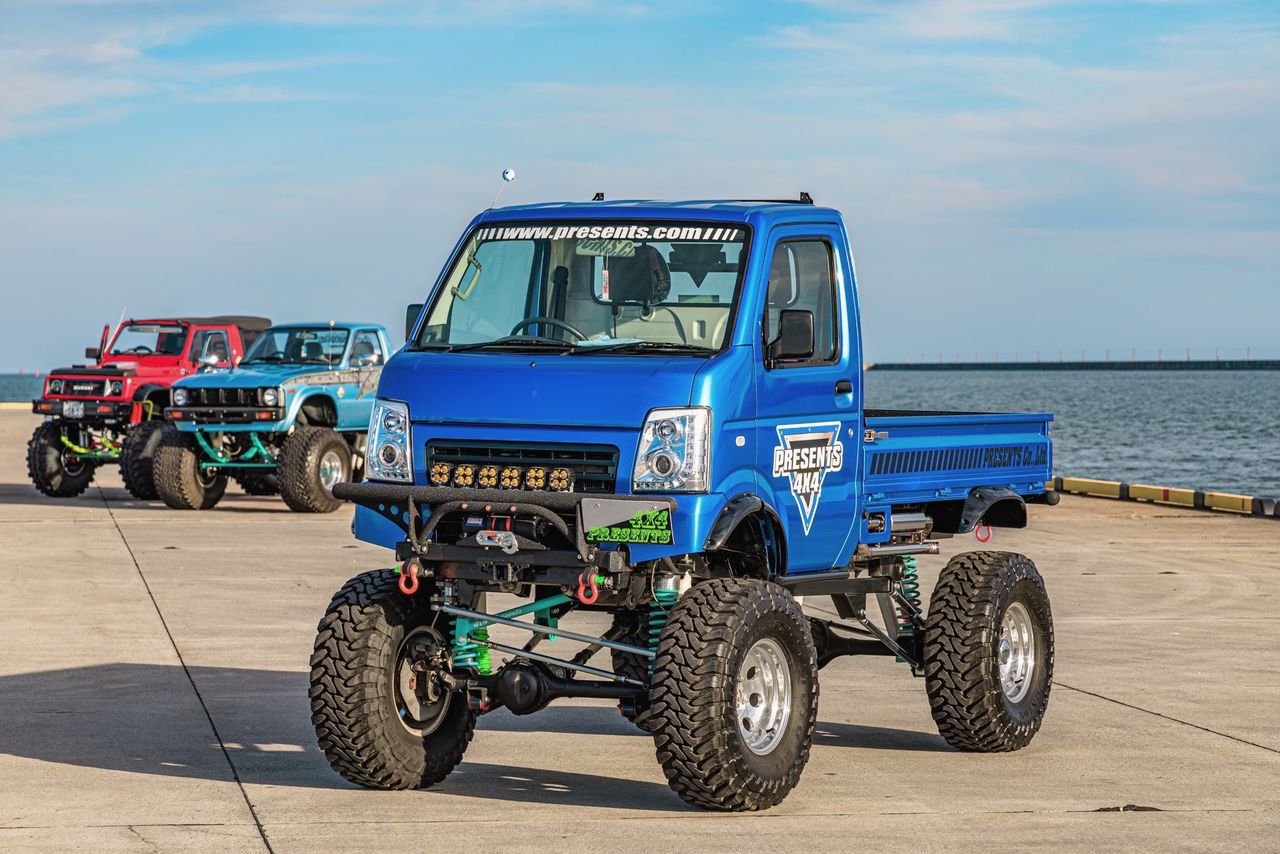
Suzuki Carry with lift-up specifications created by a 4WD custom shop. (© 4×4 Presents)
With the craze in outdoor activities in the past few years, an increasing number of users are using kei trucks as leisure vehicles. The cutting edge of this style is the lift-up version, which incorporates the taste of an offroad 4WD vehicle into the small body of a kei truck.
A lift-up suspension is incorporated into the undercarriage to raise the vehicle height, and large-diameter off-road tires improve drivability on rough roads. One standard customization option is to emphasize a wild image with off-road parts such as guards and LED light bars. These bring out an all-new side of the appeal of kei trucks, pleasing design enthusiasts while still allowing free driving with a cargo bed full of equipment for fun.
Heading for the Great Outdoors
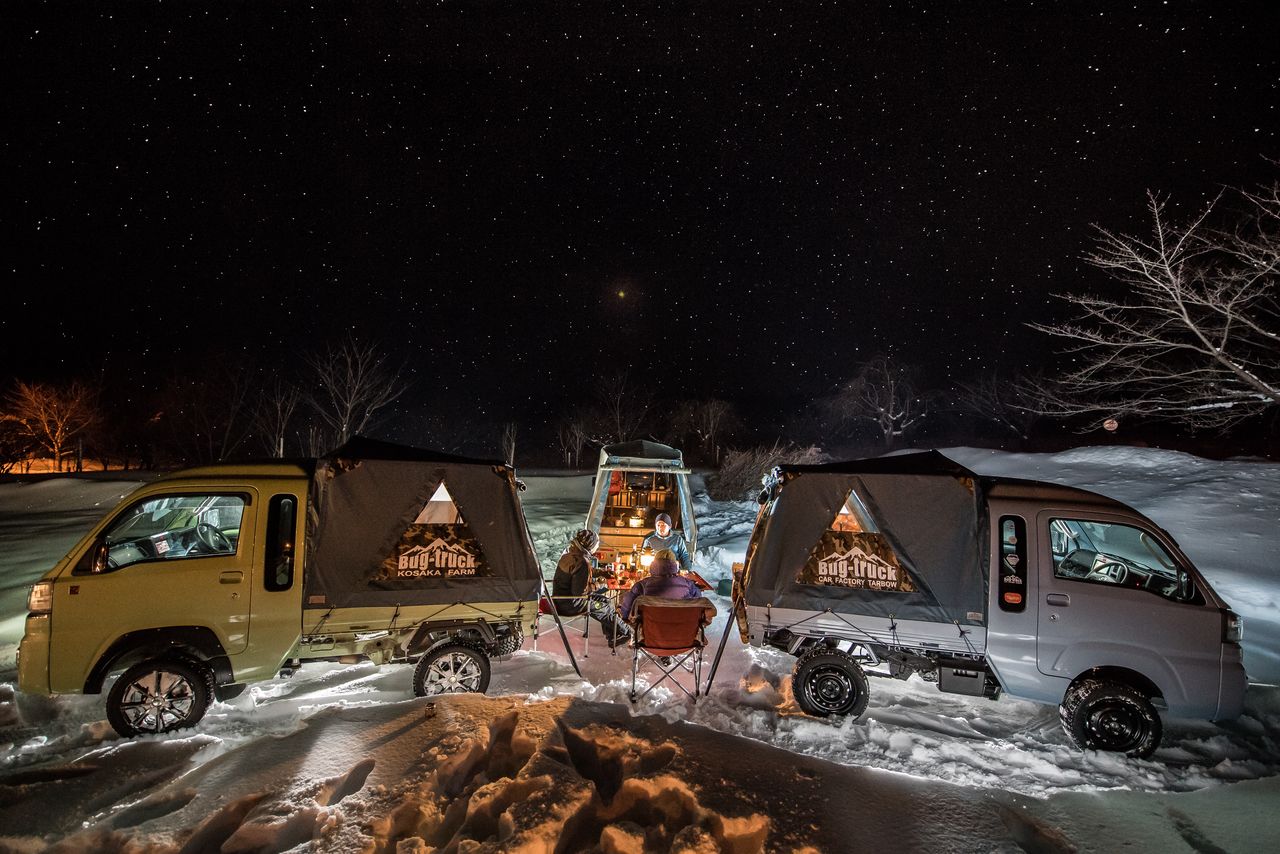
The Bug-Truck has a hollow interior that can be used for both cargo and daily use, which makes it easy to enjoy the outdoors. (© Car Factory Tarbow)
A kei truck-based leisure activity that is attracting attention is the Bug-Truck manufactured by Car Factory Tarbow, a company in Aomori Prefecture. It is equipped with a multifunctional tent kit on its cargo bed whose appearance gives the model its insect nickname.
By attaching a split frame to the cargo bed and covering it with a tent-like roof, Tarbow has transformed the kei truck’s cargo bed into a private living space and a perfect mobile base for outdoor leisure activities like surfing, fishing, and camping. The tent-style tarp is handmade by craftsmen and carefully sewn from a durable Craftel canvas. Additional items like lift-up kits, guards, and roof racks can further inform a wild off-road style that’s perfect for outdoor enthusiasts.
A Wood-Styled Mountain Hut on the Move
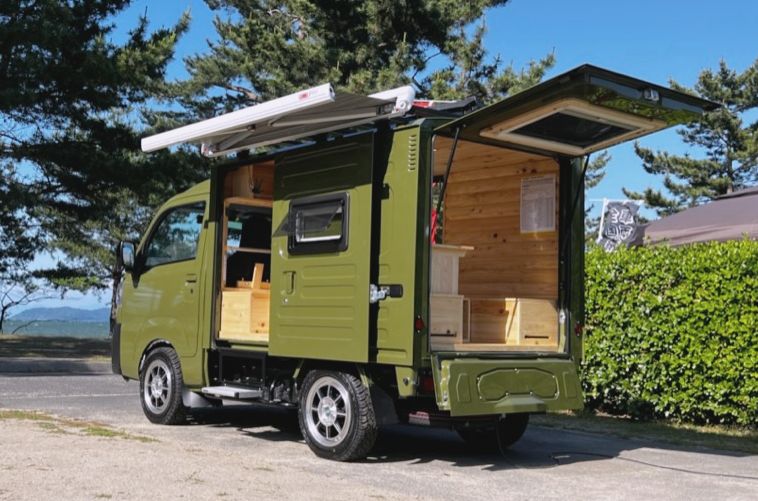
The Quokka is a delivery panel van with a wood-lined cargo compartment providing a living space. (© Mishima Daihatsu)
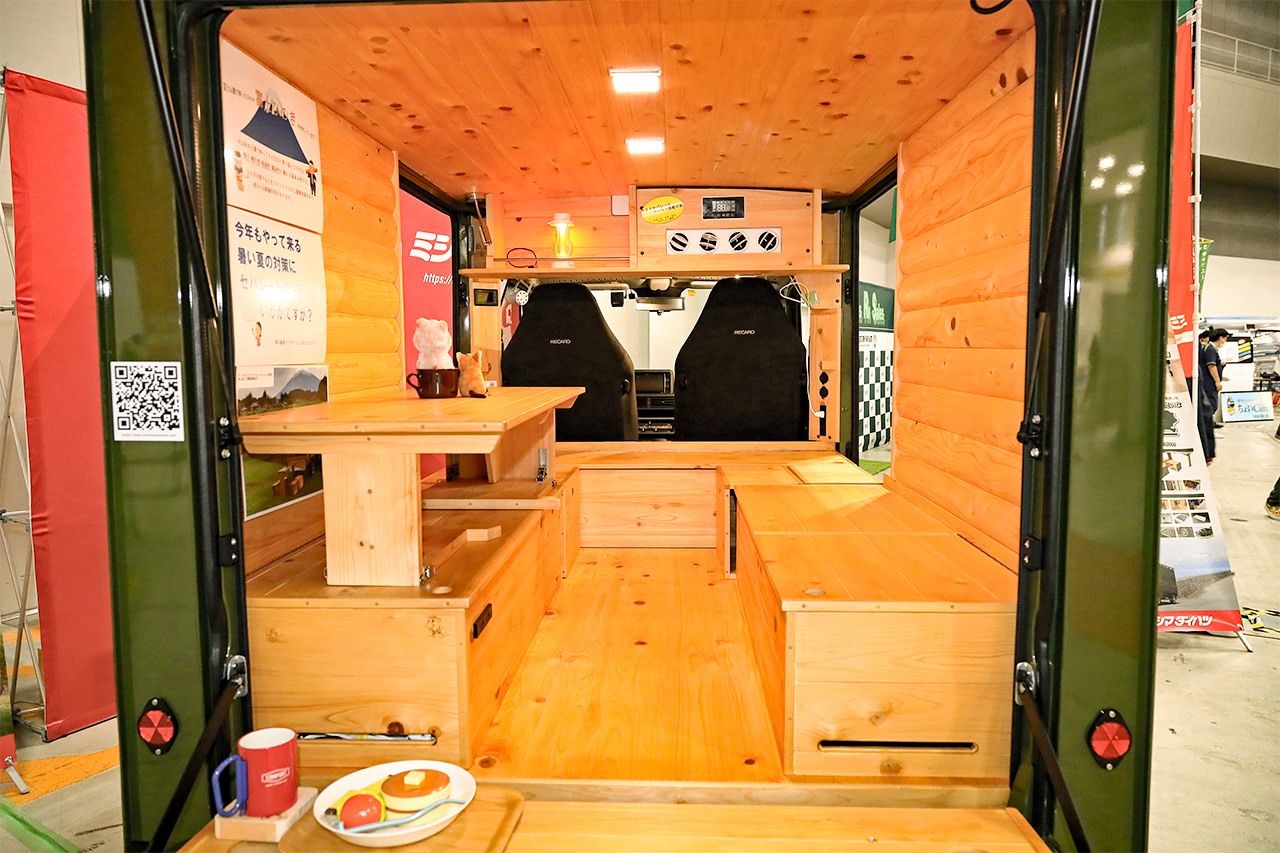
Relax in mountain cabin style in a space crafted from Fuji Japanese cypress wood. (© Iwata Kazunari)
In the Japanese camper car market, many compact models have been released that use kei trucks as their base vehicles. One model attracting attention among these for its unique construction is the Quokka light camper manufactured and sold by Mishima Daihatsu, a dealer in Shizuoka Prefecture.
The base vehicle is a Daihatsu Hijet panel van equipped with a box-shaped, panel-structure cargo compartment. This compartment’s back door is divided into upper and lower halves, and it features sliding doors on both sides, with an interior made into a camper car.
The most distinctive feature is the all-wood mountain hut style interior, which is made of luxurious Fuji Japanese cypress wood from Shizuoka Prefecture. Rearrange the four wooden boxes composing the vehicle’s warm interior to shift between bed mode and tatami room mode. Comfort can also be upgraded with an optional air conditioning system and lithium-ion battery backs for extended power.
A Minimal Truck Camper
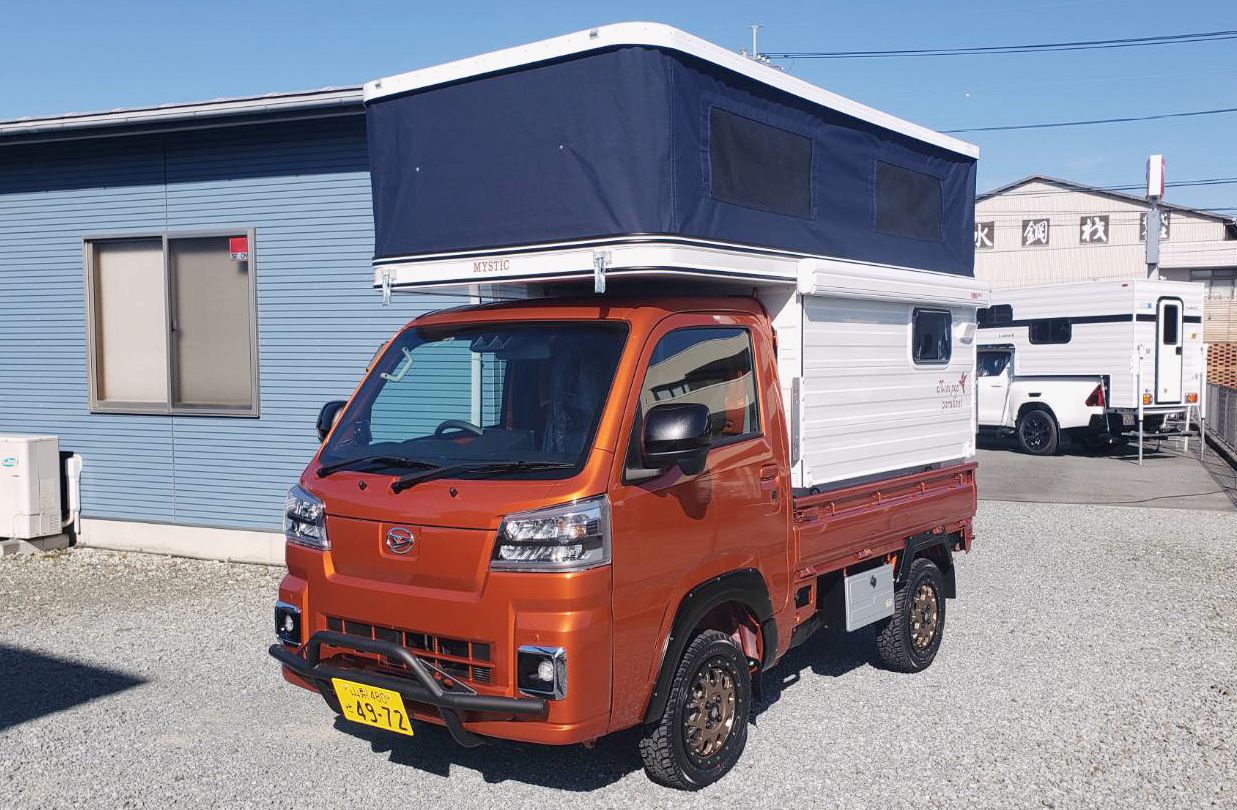
The Mini Pop Parakeet is a small truck camper with a removable shell mounted on the bed of a light truck. (© MYS Mystic)
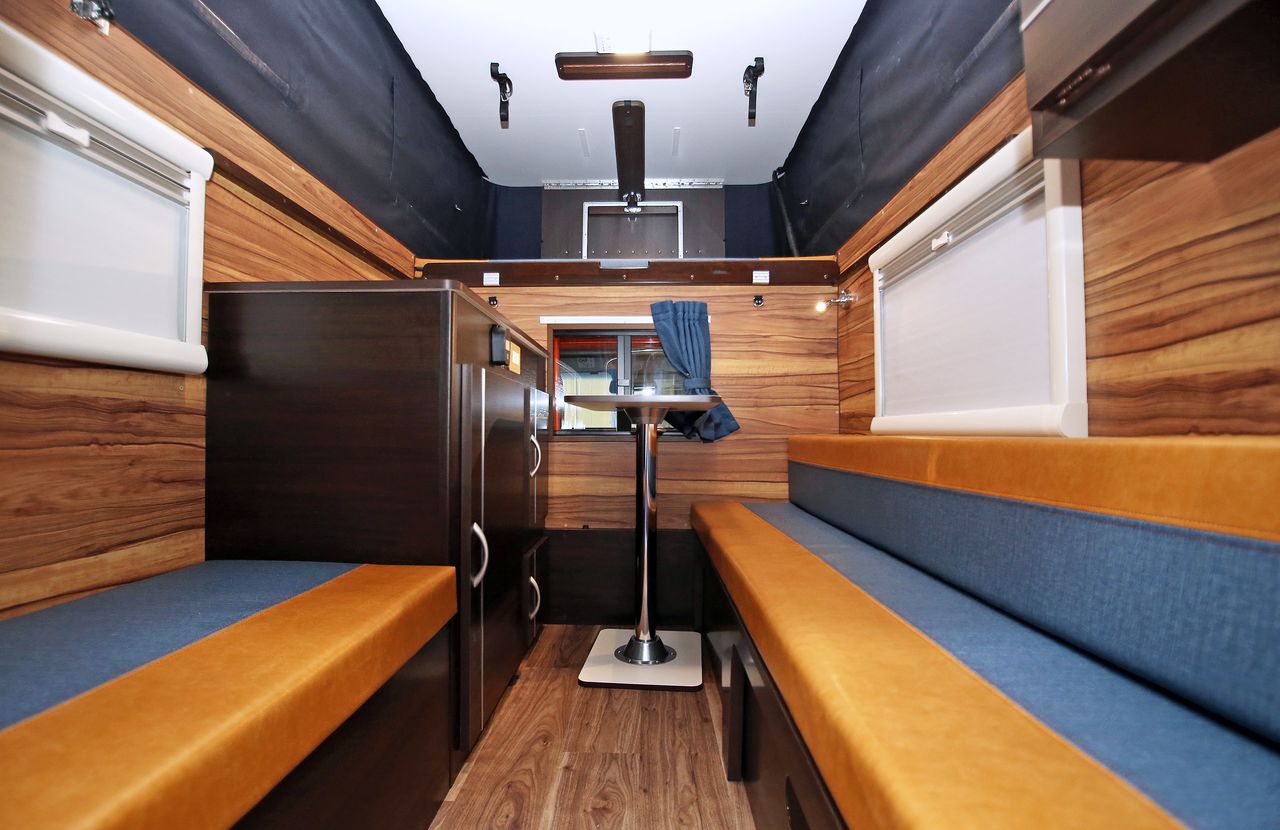
The interior is decorated with wood tones and has bed space for three adults. (© Iwata Kazunari)
The Mini Pop Parakeet is a camper van sold by MYS Mystic, a truck camper specialty store in Kanagawa Prefecture. It has an original camping shell (living space) loaded onto a kei truck bed. It offers livability and comfort comparable to a full-fledged camper, and an American design that seems to invite long road trips.
The horizontal pop-up shell, which uses aluminum material for the exterior wall, is a minimal version of the authentic North American truck camper. It can be used in two ways: Remove the shell to use the vehicle as a standard kei truck, and load it up for use as a camper. Inside the shell there is bed space for three people, a dining area, and a well-appointed kitchen. Options include a lithium-ion battery, air conditioning, combustion heater, and refrigerator.
A Miniature Mobile House
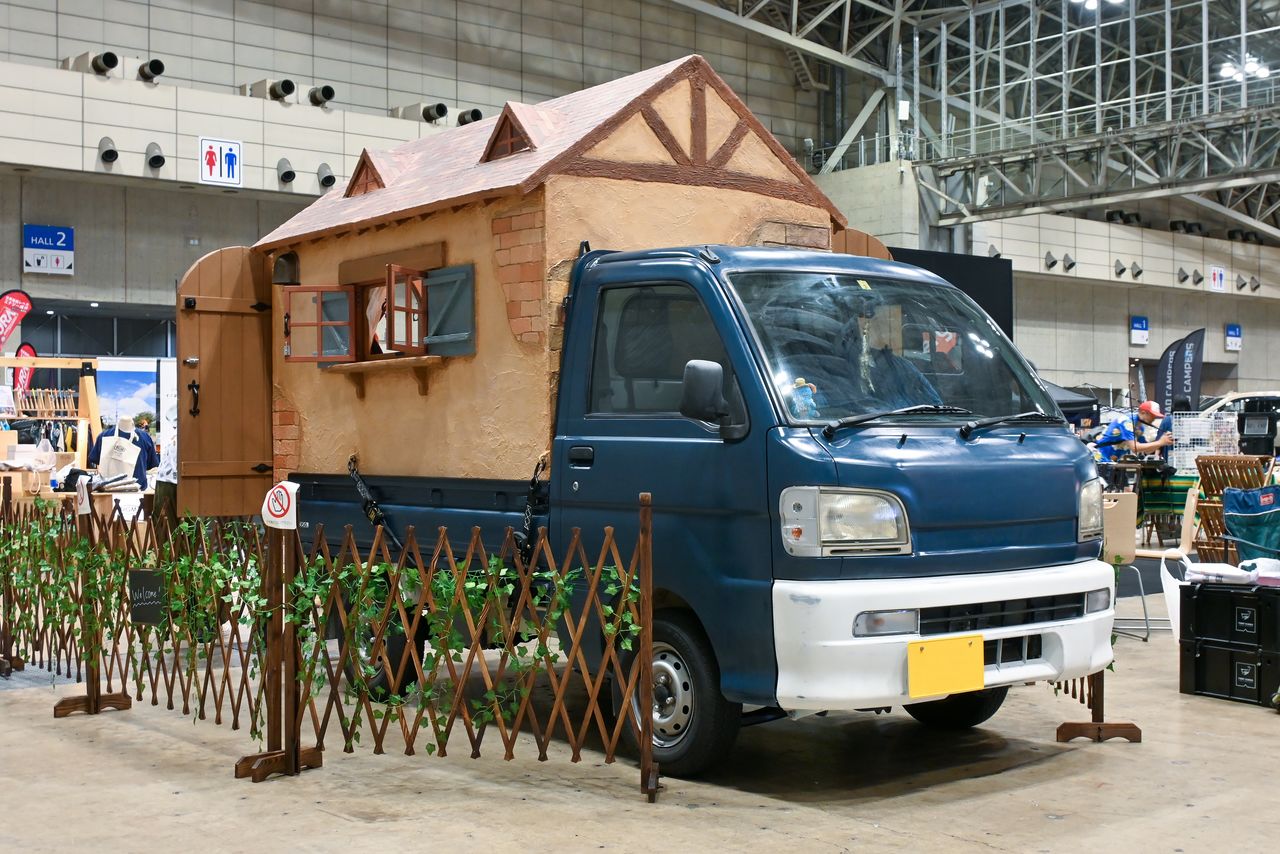
The mobile house of YouTuber Kencan. It has an original design that looks like it came from a fairy tale world. (© Watanabe Keishi)
Self-crafted camping shells built by owners into their kei truck beds is also becoming a quiet craze among enthusiasts who love to sleep in their cars.
These vehicles are called “mobile houses” and “travel houses.” Users typically load a lightweight shell that serves as a living space onto the cargo bed and travel freely while taking advantage of the mobility of a kei truck. The price is far lower than that of commercially available campers, and the interior and exterior can be customized to one’s liking. A uniquely Japanese culture that is similar to van life overseas has been born around kei trucks.
A Car Culture to Be Proud of
Kei trucks have been deeply rooted in the lives of Japanese people as practical vehicles. Their usage has expanded from business to outdoor leisure, and this unique car culture is becoming recognized as one that Japan can justifiably be proud of by many users, especially younger people. A vehicle body less than 4 meters long is filled with endless possibilities for use in a wide range of situations, from work to hobbies.
(Originally published in Japanese. Banner photo: Car Factory Tarbow’s Bug-Truck equipped with a multi-functional tent kit on a cargo bed. © Car Factory Tarbow.)
